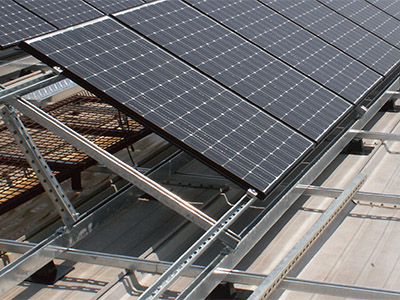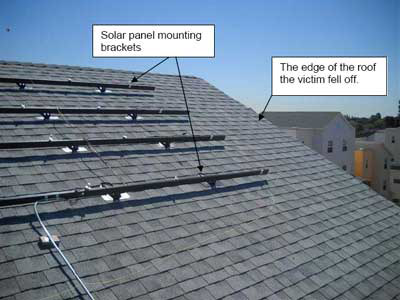Strut Roll Forming Machine
Spefication
1. Suitable Plate Material: thickness 1.2-3mm, Galvanized steel or blank steel
2. Working Speed: 4-5 meters / min
3. Forming Steps: 19 stations, drive by gear boxes
4. Material of Roller: Gcr15, Quench HRC58-62 Plated Chrome
5. Material of Shaft: 45# Advanced Steel (Diameter: 76mm), thermal refining 6. Driven system: Chain Driven 1.5 inches 20A double chain with longer shafts
8. Cutting: Hydraulic Cutting Cr12mov
9. Material of Cutting Knife: Cr12Mov, Quench HRC58-62
10. The whole machine is controlled by industry computer-PLC.
11. PLC--Panasonic, Japan English and Chinese Language
12.Touch Screen—Beijing Kunlun
13. Encoder--Omron, Japan
14. Electric parts--Schneider
15. Cutting holder: hydraulic cutting
16. Hydraulic station: 7.5kw with fan cooling system
17. Thicknss: adjustable by the hand wheels.
Application
2. Working Speed: 4-5 meters / min
3. Forming Steps: 19 stations, drive by gear boxes
4. Material of Roller: Gcr15, Quench HRC58-62 Plated Chrome
5. Material of Shaft: 45# Advanced Steel (Diameter: 76mm), thermal refining 6. Driven system: Chain Driven 1.5 inches 20A double chain with longer shafts
8. Cutting: Hydraulic Cutting Cr12mov
9. Material of Cutting Knife: Cr12Mov, Quench HRC58-62
10. The whole machine is controlled by industry computer-PLC.
11. PLC--Panasonic, Japan English and Chinese Language
12.Touch Screen—Beijing Kunlun
13. Encoder--Omron, Japan
14. Electric parts--Schneider
15. Cutting holder: hydraulic cutting
16. Hydraulic station: 7.5kw with fan cooling system
17. Thicknss: adjustable by the hand wheels.
Mounting Frames For Solar Modules:
The type of rack you need depends on where the solar panels will be mounted. They are most often either mounted on top of a pole or on a roof. Top-of-pole mounts can be either stationary or trackersthat follow the sun's movement across the sky. Sometimes solar panels are mounted on a rack on the ground.
Tilt-up racks can be angled up off a roof's pitch to the optimal angle for your area and can be seasonally adjusted. They are more visually obtrusive than flush mount racks, but in most instances they allow the panels to produce more energy. Tilt-up racks can also be turned to face due south on a roof that faces off south, again increasing energy production. Doing this, however, does look awkward.
We usually prefer not to mount on roofs because of the potential for leaks, difficulty of maintenance and over heating. However, a roof mount is generally more secure from theft or damage, and sometimes offers the best access to the sun.
Trackers are top-of-pole mounts that use electronic sensors and motors to automatically follow the sun's path. During cloudy weather they face the brightest part of the sky to maximize the array's output. Trackers can increase an array's power production by 10-50%, and are particularly effective in array direct water pumping situations. (We no longer install or recommend passive trackers, partially due to their tendency to flop around in the wind--which we have plenty of here in the Southwest).
The type of rack you need depends on where the solar panels will be mounted. They are most often either mounted on top of a pole or on a roof. Top-of-pole mounts can be either stationary or trackersthat follow the sun's movement across the sky. Sometimes solar panels are mounted on a rack on the ground.
Tilt-up racks can be angled up off a roof's pitch to the optimal angle for your area and can be seasonally adjusted. They are more visually obtrusive than flush mount racks, but in most instances they allow the panels to produce more energy. Tilt-up racks can also be turned to face due south on a roof that faces off south, again increasing energy production. Doing this, however, does look awkward.
We usually prefer not to mount on roofs because of the potential for leaks, difficulty of maintenance and over heating. However, a roof mount is generally more secure from theft or damage, and sometimes offers the best access to the sun.
Trackers are top-of-pole mounts that use electronic sensors and motors to automatically follow the sun's path. During cloudy weather they face the brightest part of the sky to maximize the array's output. Trackers can increase an array's power production by 10-50%, and are particularly effective in array direct water pumping situations. (We no longer install or recommend passive trackers, partially due to their tendency to flop around in the wind--which we have plenty of here in the Southwest).
Products
-
Roll Forming Machine
- Drywall Stud track Roll Forming Machine
- Cable Tray Roll Forming Machine
- CZ Purlin Roll Forming Machine
-
Roller Shutter Door Machine
- Awning Tube Roll Forming Machine
- Windows Shutters Insulated Slat Machine
- Shutter Bottom Roll Forming Machine
- Curtain Rail Roll Forming Machine
- Metal Rolling Shutter Door Machine
- Double layer Insulated Shutters Door Forming Machine
- Embossing Machine
- J Track Roll Forming Machine
- L Profile Forming Machine
- Octagonal Pipe Machine
- Sectional Doors Panel Production Line
- Shutters Box Series Forming Machines
- Track Rail Automatic Bending Machine
- Track Rail Forming Machine
- U Channel Roll Forming Machines
- V Strut Forming Machine
- Windows & Doors Foam Insulated Shutters Slat Machine
- Guide Rail Roll Forming Machine
- Strut Roll Forming Machine
- Roof Panel Roll Forming Machine
- Racking Shelf Roll Forming Machine
- Deck Floor Roll Forming Machine
- Fire Damper Roll Forming
- Guard Railway Roll Forming Machine
- Gutter Roll Forming Machine
- Down Spout Roll Forming Machine
- Door Frame Roll Forming Machine
- Vineyard Post Roll Forming Machine
- Fence Post Roll Forming Machine
- Round Pipe Roll Forming Machine
- VIGACERO Ceiling Rail Roll Forming Machine
- Weld Tube Mill
- Weld Round Pipe Machine
- Decorative PU sandwich wall panel
- Slitting Machine
- Auxiliary Machine
- PU Sandwich Panel Line
TOP







